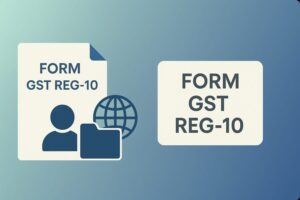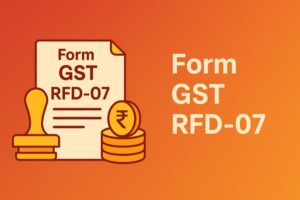A Know-it-all Guide to Concept and Implication of GST
- 16 Apr 25
- 11 mins
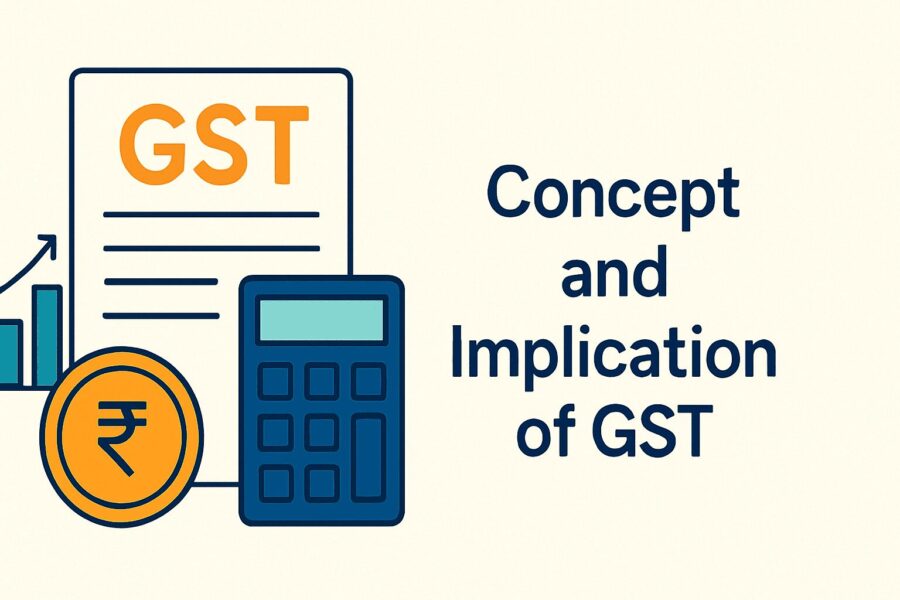
A Know-it-all Guide to Concept and Implication of GST
Key Takeaways
- GST unifies India’s complex indirect tax system under a single, transparent, destination-based tax regime.
- It eliminates cascading taxes by allowing Input Tax Credit, reducing overall tax burden.
- GST is categorized into CGST, SGST, IGST, and UTGST to efficiently divide revenue between Centre and States/UTs.
- Businesses above specific turnover thresholds must register for GST and file quarterly returns online.
- Despite some implementation challenges, GST has streamlined compliance and boosted India's economic transparency.
The GST is an indirect tax charged on goods and services across India. It is a comprehensive, multi-stage, destination-based tax that has replaced several other indirect taxes, including the Value-Added Tax (VAT), entry taxes, etc.
As a result, this has eliminated a lot of disillusionment otherwise brought about by the previous, complex, indirect taxation system in our country. The GST system, defined by its ability to boost transparency within the tax landscape via a uniform tax rate, was introduced in 2017.
GST’s primary goal was to abolish the multiplicity of complex tax structures in India, avoid cases of double taxation and bring the nation under one, single tax regime. It aimed to simplify tax collection in the country while increasing the tax revenue in the process.
The concept of GST relies on imposing taxes on goods/services that consumers help themselves to. Various slabs come under the current tax regime, depending upon which, a percentage of GST is applied to the products/services.
This blog shall further dive into the concept and implication of GST, its contribution towards economic development and other associated details.
The Introduction of the GST Concept: Purpose

Here is a list of objectives that needed to be checked off, only made possible with the introduction of the GST concept in India:
- To abide by the notion, “One Country, One Tax, One Market”To reduce the compliance burden on taxpayers
- To reduce cases of tax evasion
- To boost productivity across the system
- To subsume all indirect taxes at the state as well as centre level
- To eliminate the cascading effect brought about by multiple tax structures
- To bring forth a straightforward and comprehensive tax system
- To enhance business compliance
- To boost transparency within the taxation system of our country
- To bring about the concept of due diligence
With an idea about the objectives of GST implementation in India, let’s now move on to discussing the definition of the same.
Definition of the GST Concept
To understand the GST concept definition, we have to first, discuss what the terms “goods” and “services” entail.
Goods
By 'Goods', all kinds of movable property are referred to, excluding securities and money. GST is also inclusive of actionable claims, crops and anything attached to/forming a part of the land that has been agreed upon, to be severed beforehand.
However, certain 'Goods' are not included under GST. This category includes besan, atta that is unbranded, grains, maida, unpacked food, fresh vegetables, eggs, curds, milk, lassi and more.
Here is an exclusive list of products that are exempt from GST:
● Meat (not including frozen state/ones put in the unit container)
● Fresh fruits/vegetables (not including frozen/processed options)
● Puja samagri
● Raw silk
● Cotton that is used in khadi yarn
● Bindi, sindoor, kumkum
● Hand tools
● Printed books which include newspaper maps, Braille books, etc.
● Handloom
● Postal items like postcards, envelopes, etc. sold government
Services
The term 'Services' in the context of GST, refers to billable actions which are not classified as 'goods', securities or money. It is inclusive of activities that relate to the use of money. 'Services' have to do with conversion by cash/other preferred modes. This form of modification consists of one currency form or denomination to the other.
Implication & Impact of GST Concept
In July 2017, GST covered the entirety of India-based jurisdiction. The history of GST dates back to 1954 when France became the first country to adopt it. Since then, over 160 countries around the world have implemented GST in various forms.
Each tax law had its own threshold limit for registration based on aggregate turnover. In India, under GST, businesses must register and pay tax if their annual turnover exceeds ₹40 lakh for the supply of goods and ₹20 lakh for the supply of services.
The current GST slabs applicable to regular taxpayers are currently set at 0% (nil-rated), 5%, 12%, 18% and 28%.
The tax system has been imposed by the central and the state government concurrently, in India. This power of the state to charge Goods and Services Tax is bestowed upon it by Article 246A.
Classification of the GST Concept
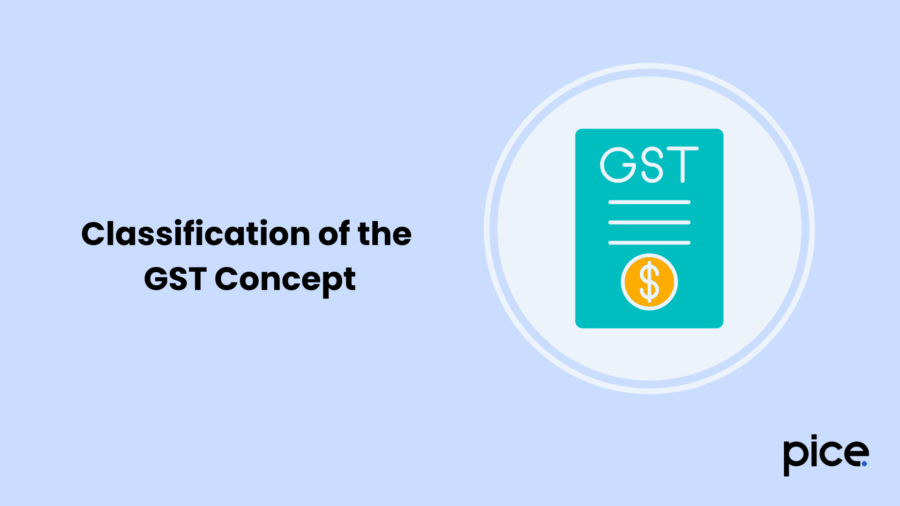
The section below discusses the classification of the GST concept.
- CGST (Central Goods and Services Tax)
CGST is applicable to the intrastate transactions or movement of goods in question. The revenue generated from the same is shared between the central and the state governments; the income is divided into two parts.
The CGST concept has played a major role in the identification of loopholes within the tax system and the subsequent revenue collection process. Certain taxes were too complex earlier, for the central government to record/compile. With that view, the following taxes have been replaced by the CGST:
● Service tax
● Cess
● Central excise duty
● Surcharges
● Duties of custom
Note that the CGST has the same associated rates as are applicable with the SGST/UTGST. This process has to do with a dual GST model.
- SGST (State Goods and Services Tax)
The SGST, under the GST regime, is applicable to transactions that take place within the same state borders. So, both SGST as well as CGST are levied when the sale invoice emerges within the state. This is owing to both the state and central governments sharing an equal revenue from the applicable cess.
Note that the Union Territories of Delhi, Jammu & Kashmir and Puducherry come under the SGST law since they have their own legislative assemblies.
- IGST (Integrated Goods and Services Tax)
The Integrated Goods and Services Tax (IGST) is applicable to interstate transactions. The goods/customs-related imports/exports fall under the scope of IGST.
Consider the example of a manufacturer based in Uttar Pradesh, selling goods to someone in Delhi. In such a scenario, the IGST will be charged on the transaction value of the 'Goods'. The central government will be collecting the sum of all the goods. This sum will then be split between the central government and Delhi (consumer state, in this case).
- UTGST (Union Territory Goods and Services Tax)
The UTGST tax is levied on the supply of goods and/or services within the Union Territories of India. The Union Territory Government is responsible for collecting the revenue. In UTs like Chandigarh, the Andaman and Nicobar Islands, Lakshadweep, Daman Diu, and Dadra Nagar Haveli, the products/services are subject to UTGST application.
GST Concept and its Application
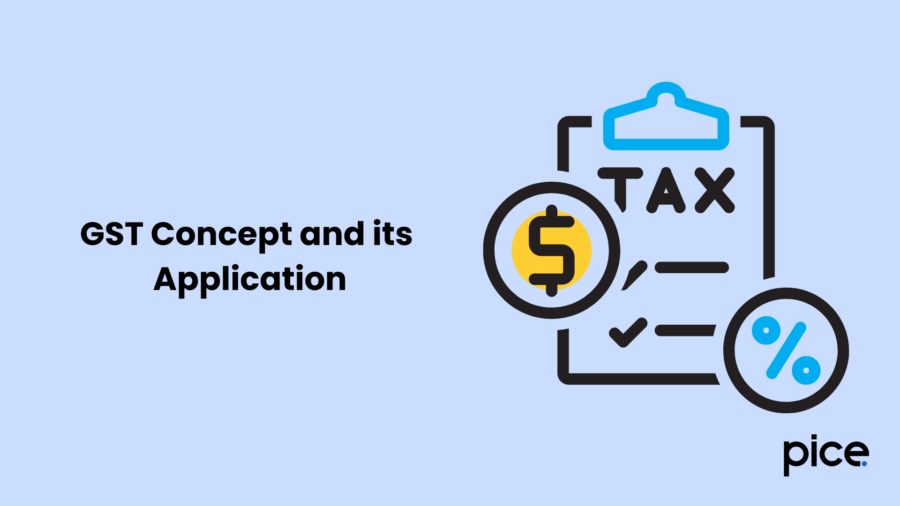
As per the framework of the GST system, businesses with a turnover exceeding ₹40 lakh shall come under the GST regulations. Every quarter, such companies and enterprises will be required to file timely return forms and ensure payment of taxes online via the GST portal. The online mode has majorly contributed towards streamlining the tax collection methods.
Businesses are no longer required to separately pay taxes for their business-related activities. Thus, the GST concept has altogether eliminated the problem of 'tax cascading'. Citizens are granted relief in the case of certain products/services, like medicines, apparel, etc. However, the cess has increased on some other products, including restaurant outings, electronic items, etc.
The Input Tax Credit (ITC) is an advantage owing to which businesses are allowed to claim credit for taxes paid upon the inputs, across supply chains. This, again, helps avoid tax cascading (tax-on-tax situations), minimising the tax burden on consumers, against the bigger picture.
What Is the GST Council?
The President of India has constituted the GST Council, which came into force on the 12th of September 2016. The Union Finance Minister was named the chairperson of the Council. Ministers were nominated from across various states, as members of the GST Council.
The body of the council has 33 members. Out of this panel, 31 members come from 28 states while 2 members are off-centre.
The primary role of the Council is to ensure a seamless and efficiently functioning GST and input tax credit system. So, the members are held responsible for making certain recommendations as per rising GST-related issues, including:
● GST Rates & Exemptions: They decide on which goods/services shall be exempt from GST or be subject to various tax rates.
● Make GST Laws: They must develop model laws as well as principles for imposing/collecting the GST amount.
● Special Provisions: They are responsible for creating special rates or provisions for specific states, like those of the NE/hilly states.
● Resolution of Disputes: They must resolve disputes that arise from GST implementation.
Therefore, the GST Council assumes a crucial role in the context of the country’s indirect tax regime. They ensure that GST is implemented uniformly and effectively across India.
Criticism of the GST Concept
While there are several positive impacts associated with the implementation of GST in India, some points of criticism inevitably exist. The various tax slab rates, for example, have led to a great deal of confusion. These GST rates pose a medium of confusion, especially during the calculation of taxes with different slabs in the picture.
The manufacturing and automobile industry have taken a huge hit owing to comparatively higher tax rates; the associated negative impact was impossible to ignore. Note that the government has, as a result, criticised and initiated changes to the system to make it a bit more flexible. This way, the negative impact can continue to be controlled to some degree.
It is predictably true that GST has a bright future ahead, but its ability to be a game-changer can be further tapped into if utilised appropriately. The GST system needs to be further improved in order to strengthen the tax revenue collection system and simultaneously make it difficult for tax evasion cases. Possibly, in the near future, newer and more considerate tax rates should be introduced to the masses, with the ultimate aim of eradicating negative impact.
Conclusion
To conclude, it is safe to say that the Goods and Services Tax (GST) is, indeed, one of the biggest tax reforms that has completely revolutionised India's tax collection system. Subsuming several indirect taxes/cesses, the GST has erected a unified tax system, introducing channels for economic growth, all while maintaining transparency within the system. It has also relieved small businesses of compliance burden.
The concept and implications of GST are far-reaching in scope. It not only impacts businesses and consumers, but also the Indian economy as a whole. Given that the GST Council continues to work on, refine and as a result, improve the GST framework, it is set to become a top-tier game-changer.
We hope that you now have an understanding of the concept and implications of GST. It shall help you unlock its highest potential and smoothly navigate the complexities of the GST tax regime!
💡If you want to streamline your payment and make GST payments via credit or debit card or UPI, consider using the PICE App. Explore the PICE App today and take your business to new heights.
FAQs
What is GST and why was it introduced?
What are the different types of GST in India?
CGST (Central GST) for intra-state sales.
SGST (State GST) for intra-state sales collected by states.
IGST (Integrated GST) for inter-state transactions.
UTGST (Union Territory GST) for transactions in Union Territories.
This structure ensures both the Centre and States get their fair share.
 By
By 







